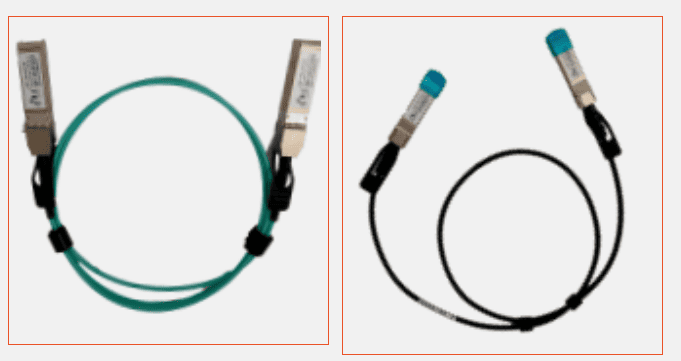AOC VS DAC : Data center cabling, which one is your ideal type?
With the deepening of digital change in all industries, human society is accelerating towards intelligence. As a solid base for the intelligent world and digital economy, data centers have also seen a boom.
Artificial Intelligence (AI) and Big Data have had a significant impact on server demand in server rooms, and the rapid growth in these two areas has led to the need for more and more powerful server resources.
01 Increased demand for computing power
AI model training: training large-scale deep learning models requires a lot of computing resources. Organizations need more high-performance servers to support the AI model training process, which may include GPU (Graphics Processing Unit) servers or dedicated AI acceleration cards.
Real-time inference: deploying AI models for real-time inference (i.e., making predictions on new data) requires low-latency computing power. This requires server renters to provide servers with fast response times.
02 Increase in Storage Requirements
Big data storage: Big data analytics requires high-capacity storage to store massive amounts of data. Server renters need to provide high capacity storage servers or network attached storage solutions.
03Increase in Network Bandwidth Requirements
Data transfer: Large-scale data analysis and AI model training may involve large amounts of data transfer, requiring high-speed network connectivity. Server renters need to provide servers and network architectures with high bandwidth.
here's a professional suggestion from 15years cable&wires factory as your ref, welcome to share your opinions with us as well: Server room high-speed connection solutions
Let's take a look at the network solution for the “general computing” scenario, how to realize the network interconnection between servers.
Several servers are placed in each cabinet (more or less depending on the height of the server), each server is configured with 1-2 NICs (25G/100G interfaces), and TOR access switches are placed on the top of the cabinet to connect the NICs of the servers in the two neighboring cabinets.
As the distance from the server NICs to the TOR switch are too long, (up to 2 cabinets across within 3M), in order to achieve standardized cabling in the data center, generally use standard fixed-length cables for interconnection, but please note that although the NICs and TOR switches here are provided with the type of optical interfaces (eg: 100G is generally a QSFP-56 optical port) but for the interconnection of the can be optical module + fiber, or electrical module + copper cable that meets the interface type.
YueDao has specially launched AOC and DAC high-speed cables to meet the demand of server room servers for high-reliability, high-bandwidth and high-speed connection cables.
DAC, AOC product features and application scenarios
DAC (Direct Attach Cable):
DAC is a high-speed cable made primarily of silver-plated copper conductors as well as foam insulation.
1.Low Cost
Unlike some other high-speed connection technologies, DAC does not contain an internal photoelectric conversion module. This feature gives it a significant cost advantage, enabling high-speed data transmission at a relatively low cost.
2.High Transmission Performance
Because there is no photoelectric conversion process, the DAC transmits electrical signals directly through copper wires, providing excellent signal transmission over short distances.
3.Application scenarios
DAC are often used in cost-sensitive scenarios that require relatively short transmission distances, such as the close connection between servers and servers and servers and storage devices within a data center.
AOC (Active Optical Cable):
AOC consists of two modules at both ends and a section of optical fiber connected in the middle. This structural design allows for a high degree of integration between the optical modules and the fiber optic cable. The optical modules at both ends play a key role in the transmission process and are equipped with laser components. During data transmission, the optical module at the transmitting end converts the received electrical signals into optical signals, which are transmitted at high speed over the intervening optical fiber.
1.Low Loss
High Bandwidth Fiber optics have the characteristics of low loss and high bandwidth, which ensures that the optical signal remains of good quality over long distances. When the optical signal reaches the receiving end, the optical module at the receiving end converts the optical signal back into an electrical signal for use by the equipment.
2.Application Scenarios
AOC technology has obvious advantages in the field of high-speed data transmission, can meet the needs of long-distance and high-bandwidth transmission, and is widely used in high-speed connection scenarios within and between data centers.
In general, the advantages of DAC (Direct Attached Copper) are particularly significant in application scenarios where the transmission distance is short (less than 3 meters) and the rate is relatively low. This is mainly due to the fact that DACs do not require additional redriver and retimer chips at both ends, making them cost competitive.
Leave a Reply
- HYA 50×2×0.4 Communication Cable: Reliable Solution for Guangzhou Surveillance Systems
- Why Does Your EV Stop Charging Suddenly? Let’s Troubleshoot!
- Yuedao Intelligent Empowers Guangzhou Metro to Set World Record for Fastest Subway Speed
- Become Our Local Partner - Expand Your Market with High-Quality Cables & Wires
